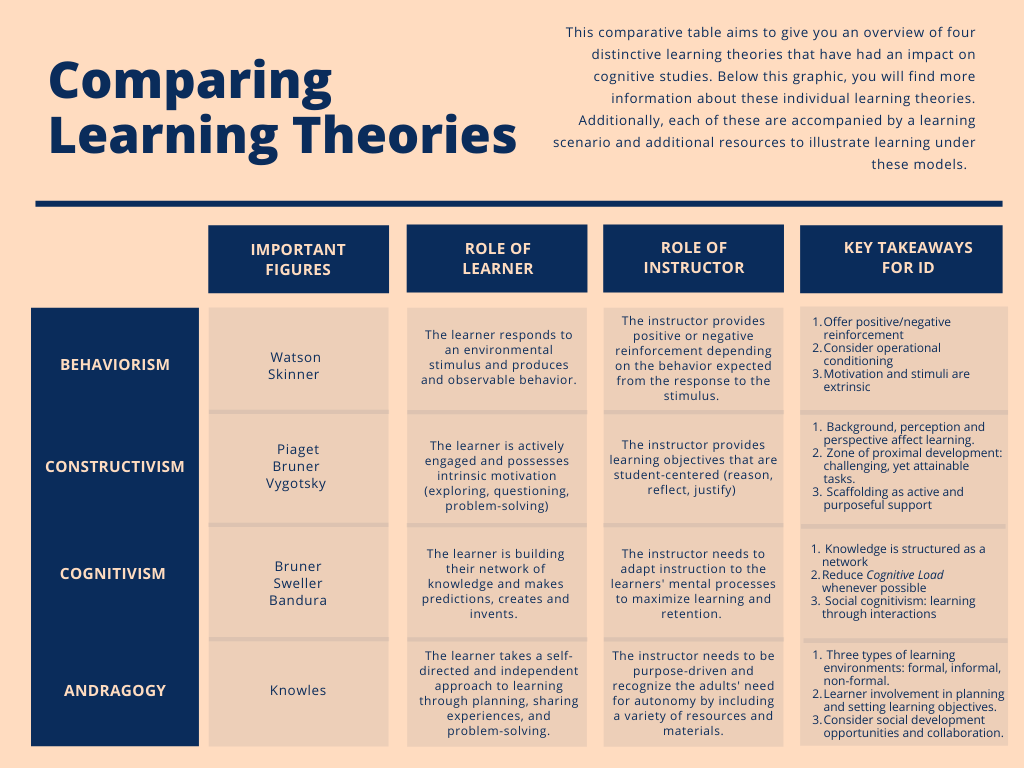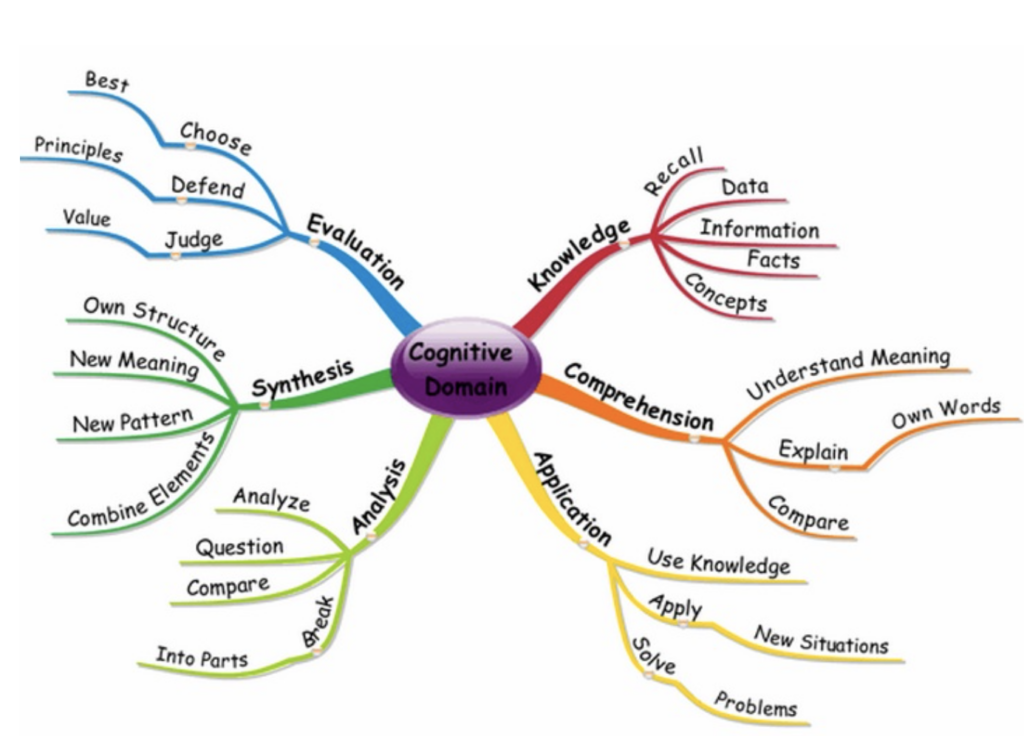Whilst learning is an ever-evolving, diverse practice, within the field of education, there are three perspectives – behaviourism, cognitivism, and constructivism – that instructional design gets categorized into. Ertmer and Newby (2018) state that while “these viewpoints overlap, “they are distinctive enough to be treated as separate approaches to understanding and describing learning” (pg. 5).

Behaviourism
The learning theory of behaviourism places “emphasis on rewards and punishments as drivers of learning” (Bates, 2014). A behaviourist approach was often used by my parents to enforce desired behaviours, as well as teach me certain skills such as swimming. Growing up, I despised swimming and going into the water, but my parents viewed it as an essential life skill. Upon successful completion of a swimming level, I was rewarded with verbal praise as well as an incentive of going to the store and picking a treat. Over time, I began to look forward to swimming lessons as I was eager to gain the reward, thus, behaviourism is “essentially the concept of operant condition, a principle most clearly developed by B.F. Skinner” to elicit desired responses (Bates, 2014).
Cognitivism
Cognitive learning is a foundational element within educational settings as it requires the learner to reflect back on what was taught regarding “what they know [and] how they came to acquire it” (Ertmer & Newby, 2018, pg. 7). When I was in high school, my chemistry teacher would frequently give us exit tickets. The exit ticket was comprised of three questions, each with the objective of prompting reflection pertaining to ourselves as learners and toward the lesson’s content. The three questions would be what we learned, what we wished to learn more about, and what material we would like to spend more time on. I began to progressively apply and utilize the three aforementioned questions when studying for tests to see where gaps in my knowledge were.

Constructivism
Constructivism “equates learning with creating meaning from experience” (Bednar et al., 1991 as cited in Ertmer & Newby, 2018, pg. 7). This is achieved by “engaging the learner in the actual use of the tools in real-world situations” (Ertmer & Newby, 2018, pg. 8). During my first year of the Bed program at UVIC, I engaged in inquiry-based learning. My project centred around brain breaks pertaining to the sustainment of engagement. To procure concrete data, I taught lessons with and without brain breaks to compare and contrast the level of conveyed engagement of the learners. It was a rewarding experience to not only have autonomy over my learning but to witness the power of brain breaks in the real world rather than reading about it from a textbook.

References
Bates, A. (2019). 2.4 Cognitivism. Pressbooks. https://pressbooks.bccampus.ca/teachinginadigitalagev2/chapter/3-3-cognitivism/
Bates, T. (2014). Learning Theories and Online Learning. [Blog post]. https://www.tonybates.ca/2014/07/29/learning-theories-and-online-learning/
Ertmer, P. A. & Newby, T. (2018). Behaviorism, Cognitivism, Constructivism: Comparing Critical Features From an Instructional Design Perspective. In R. E. West (Ed.), Foundations of Learning and Instructional Design Technology. EdTech Books. https://edtechbooks.org/lidtfoundations/behaviorism_cognitivism_constructivism
LibGuides.(n.d.). Learning theories [Photo].https://www.francofunclass.com/learning-theories
Sprouts. (2021). Skinner’s Operant conditioning: rewards & punishments [Video]. YouTube. https://www.youtube.com/watch?v=ne6o-uPJarA&ab_channel=Sprouts
Hi Katie! Your overview of the three learning theories was fantastic! I loved how you connected the materials to your personal learning experience – it really helps understand the concepts better. The additional resources you provided were also incredibly helpful. If I could offer one suggestion for improvement, it would be to include references for all visual materials used in your blog. Overall, great job!